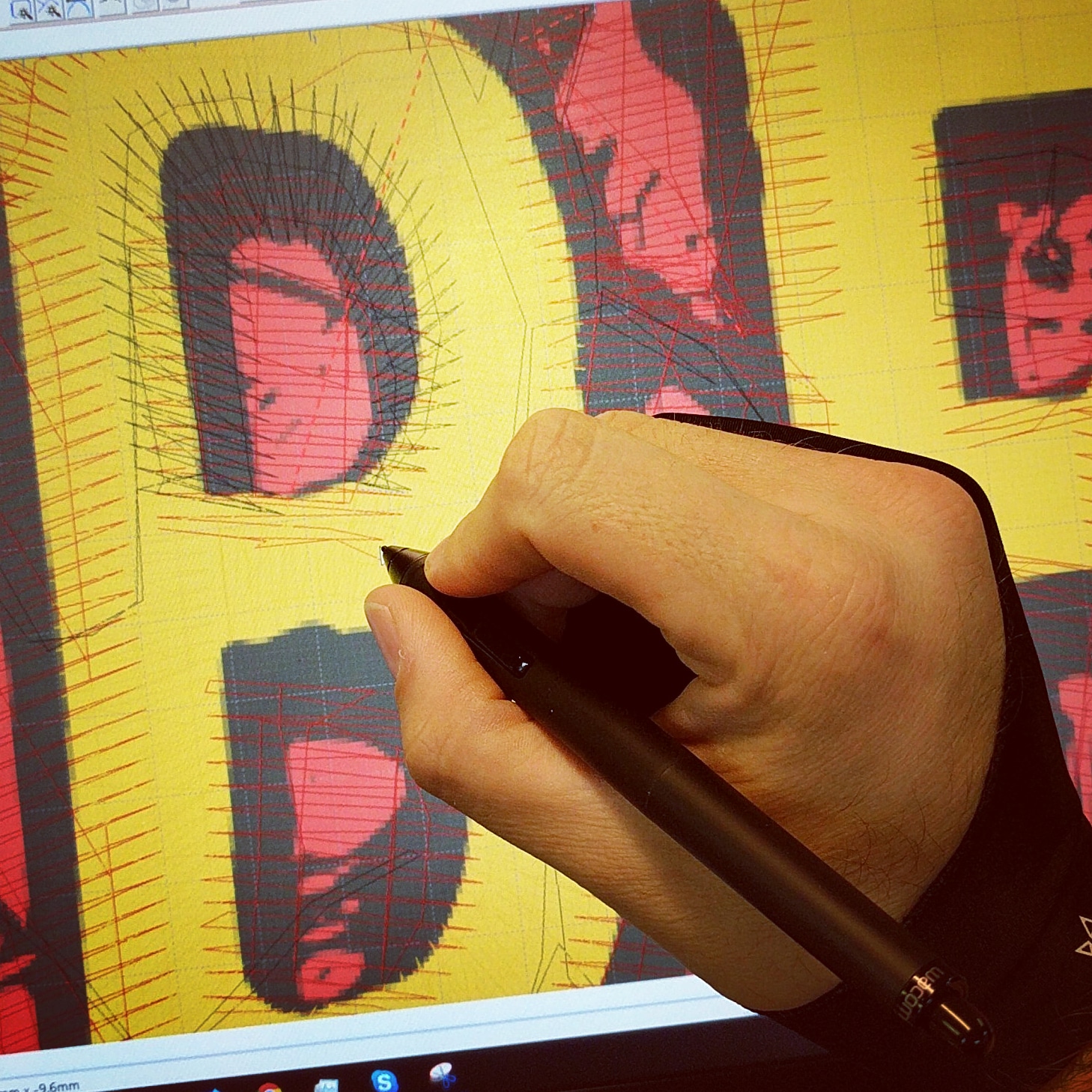Specialist Digitizing for Embroidery: Rapid and Reliable Solution
Specialist Digitizing for Embroidery: Rapid and Reliable Solution
Blog Article
Streamlining the Art of Embroidery Digitizing: Step-by-Step Overview
Needlework digitizing is a careful craft that demands precision and creativity. As modern technology remains to advance, the digitization process has become extra obtainable, enabling enthusiasts to bring their intricate layouts to life with ease. In this overview, we will certainly decipher the intricacies of needlework digitizing, breaking down each action carefully to improve the process and empower both newbies and experienced embroiderers alike. Stay tuned to discover just how you can streamline this elaborate art form and transform your imaginative visions into wonderfully embroidered work of arts.
Comprehending Embroidery Digitizing Software Application
Embroidery digitizing software functions as a crucial tool for changing intricate styles right into digital styles compatible with embroidery equipments, assisting in specific stitching and personalization. This customized software application enables users to import various picture documents layouts, such as JPG or PNG, and convert them right into needlework machine-readable layouts like DST, EXP, or PES - Digitizing for Embroidery. By utilizing functions like stitch editing, rug alternatives, and thread color selection, digitizing software application makes it possible for users to control every aspect of the layout procedure
Additionally, progressed needlework digitizing software program supplies devices for producing complex layouts, changing stitch thickness, and integrating complex information. Individuals can additionally preview the style prior to sewing it out, making sure precision and decreasing mistakes. In addition, many software application give automatic features that aid simplify the digitizing procedure, conserving effort and time.
Recognizing the capacities of needlework digitizing software is necessary for attaining high-quality lead to needlework tasks. By understanding this tool, needlework lovers and specialists can unleash their creativity and bring intricate layouts to life with accuracy and performance.

Picking the Right Style Data
After familiarizing yourself with the capabilities of embroidery digitizing software program, the next vital action in the process is selecting the ideal design apply for your job. Digitizing for Embroidery. When selecting a layout declare needlework digitizing, it's vital to think about the complexity of the layout, the dimension of the end product, and the sort of material you will be collaborating with
For intricate styles with great information, a high-resolution picture or vector file is recommended to make certain that the embroidery machine can precisely replicate the layout. In addition, the dimension of the end product plays a substantial duty in choosing the right layout documents. Larger layouts may call for higher resolution data to preserve quality and sharpness.
Furthermore, the kind of fabric you will certainly be stitching on affects the option of style data. Various materials might call for changes in the layout data to make sure that the stitches are appropriately lined up and the style shows up as planned. By meticulously picking the best style documents based upon these elements, you can establish yourself up for a successful needlework digitizing process.
Digitizing Devices and Strategies
Making use of specialized software and precision strategies, digitizing tools are essential in transforming detailed layouts right into embroidery-ready files. Embroidery digitizing software, such as Wilcom, Hatch, or Embrilliance, offers the needed system to transform artwork into stitch information. These programs offer features like stitch modifying, padding choices, and text tools to make sure the style converts effortlessly onto fabric.
One of the essential techniques in digitizing is developing a clear path for the needlework maker to follow. This entails digitizing each aspect of the style with precision, establishing stitch types, densities, and instructions. By utilizing tools like digitizing tablets or software-specific plugins, embroiderers can attain a high level of accuracy in their digitized layouts.
Moreover, grasping the art of underlay stitching is essential a knockout post for generating high quality needlework. Underlay sewing supports the textile and develops a foundation for the layout, ensuring that the last item is both aesthetically enticing and resilient. By comprehending these digitizing devices and techniques, embroiderers can boost their craft and bring elaborate layouts to life with precision and efficiency.
Tailoring Stitch Kinds and Instructions
The choice of stitch types can significantly impact the total look and texture of the stitched design. By strategically incorporating these stitch types, embroiderers can accomplish deepness and dimension in their styles.
Additionally, the direction of stitches plays an important duty in boosting the visual allure of the final needlework. By trying out with various stitch angles and patterns, embroiderers can bring their styles to life with impressive information and details.
Testing and Refining Your Digitized Layout
To make sure the accuracy and top quality of your digitized style, detailed screening and improvement are vital steps in the embroidery digitizing process. When you have actually completed the digitization of your style, it is important to evaluate it before waging the real embroidery. Checking enables you to recognize any kind of prospective concerns such as thread breaks, sew density troubles, or layout distortions that may influence the result.

After testing, it is necessary to refine your digitized layout based on the comments from the test sew-out. This may include tweaking sew setups, adjusting densities, or making adjustments to the general style to accomplish the desired end result. By iterating with testing and improvement, you can adjust your digitized design to perfection More hints prior to moving on Full Article with the actual needlework procedure.
Conclusion
To conclude, mastering the art of embroidery digitizing needs a complete understanding of the software application, picking the right design documents, making use of digitizing devices and methods, personalizing stitch kinds and instructions, and testing and refining the digitized layout. By adhering to these actions, embroiderers can streamline the digitizing process and produce premium stitched layouts with precision and performance.
Report this page